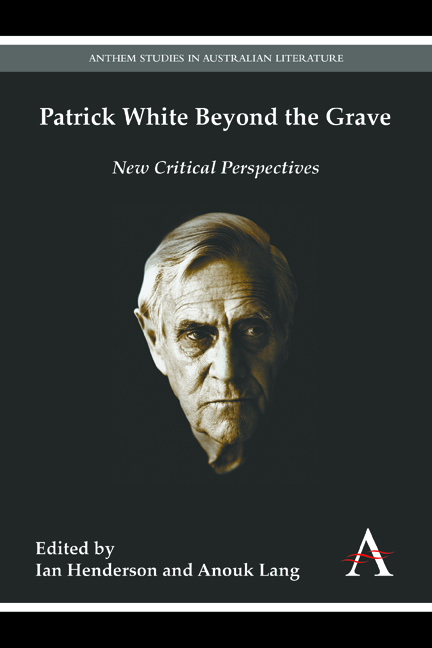Book contents
- Frontmatter
- Contents
- Acknowledgements
- Introduction
- Part I RESURRECTED PAPERS
- Part II MANY IN ONE
- Part III THE PERFORMANCE OF READING
- Part IV QUEER WHITE
- Chapter 11 Knockabout World: Patrick White, Kenneth Williams and the Queer Word
- Chapter 12 Queering Sarsaparilla: Patrick White's Deviant Modernism
- Contributors
- Index
Chapter 11 - Knockabout World: Patrick White, Kenneth Williams and the Queer Word
from Part IV - QUEER WHITE
Published online by Cambridge University Press: 18 January 2018
- Frontmatter
- Contents
- Acknowledgements
- Introduction
- Part I RESURRECTED PAPERS
- Part II MANY IN ONE
- Part III THE PERFORMANCE OF READING
- Part IV QUEER WHITE
- Chapter 11 Knockabout World: Patrick White, Kenneth Williams and the Queer Word
- Chapter 12 Queering Sarsaparilla: Patrick White's Deviant Modernism
- Contributors
- Index
Summary
First Lady:
We're the knockabout girls of the piece!
Young Man:
I thought it was all knockabout.
Patrick White, The Ham Funeral (1948/1961)
Hugh Paddick:
Ooh hello! I'm Julian and this is my friend Sandy!
Kenneth Williams:
Ooh hello, Mr Horne, oh lovely! Oh yes, how bona to vada your dolly old
family-sized, new-improved eek again! What brings you trolling in here?
‘Bona Advertising’, Round the Horne (1968), BBC Radio
Walked to Foyle's to get The Living and the Dead by the much-praised Patrick White. It's like reading something between T. S. Eliot and Henry James with an awful lot of Virginia Woolf thrown in. A rambling messy sort of writing with all the story impetus lost in ‘philosophical’ musings.
Kenneth Williams, Diary Entry, 1 June 1982
I first read Patrick White in the windowless staffroom of the Greenwood Child Care Centre in North Sydney. It was 1992, White had been dead for almost two years. That hadn't stopped me during my daily rides around Centennial Park pausing outside the house where his partner Manoly Lascaris still lived in Martin Road. The place retained a fascination for me as an auratic nexus of what Sir Les Paterson (played by Barry Humphries) called the Yartz; Martin Road was the national salong. But it was four years since I had dropped out of my Tasmanian undergraduate degree to go find myself in the city – by which I also mean coming out and immersing myself in the Sydney gay ‘scene’ – and only now was I gearing up for a return to serious study … and not to any old place but to the University of Sydney. I figured White would somehow ready my soul. Here, by universal repute, was Great Writing, Big Themes, Difficult Art. Green wood indeed, I thought if I could handle that, I could handle anything.
I did know that White was ‘homosexual’ – he had ‘come out’ to the public at large with Flaws in the Glass (1981) – and that he had lived as one half of Australia's most famous same-sex couple. But it did not occur to me to think of his writing, as I prepared to read it, in terms of his sexuality.
- Type
- Chapter
- Information
- Patrick White Beyond the GraveNew Critical Perspectives, pp. 181 - 192Publisher: Anthem PressPrint publication year: 2015

